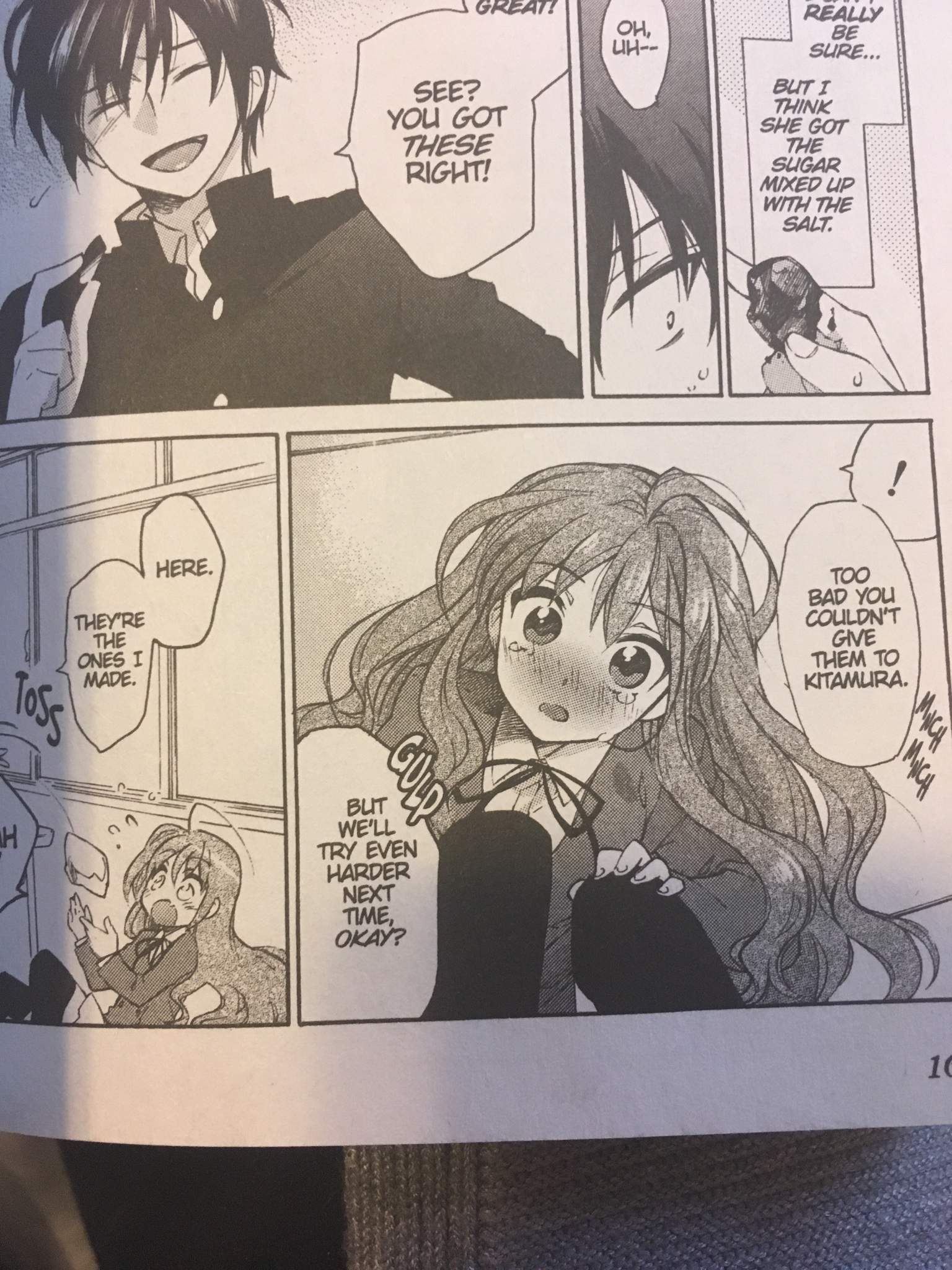

This deliberate pace helps make the push and pull of the central couple feel lively, almost syncopated.

What does a grand gesture, like getting in a fight with your crush’s crush, mean to your crush? Probably not the same thing that it means to you. Those changes are often hard to verbalize, and the reasons given to one person for the change sometimes aren’t the ones given to another. It hits each one of the conventional milestones of a high school anime - pool episodes, Christmas episodes, festival episodes - but each station is indicative of several meaningful changes in friendships and romances. Toradora is never in a rush, but it also doesn’t dawdle. Garbled, unsaid emotions are palpable in these moments, held back like a held breath. That length doesn’t sound like much in comparison to these other benchmarks, but it’s enough, allowing for some much-needed silence that can’t be found in the light novel that makes it feel all the more expansive: a moment by the vending machines, a burdened walk home, empty rooms lit by the weak evening sun. In the anime - Toradora’s most popular form - it’s two seasons span 25 episodes in total. In the manga adaptation, it’s the literal month of time between installments started in 2007, the ongoing comic still hasn’t wrapped up the original story. Thoughts and pasts are carefully detailed and explicated, bringing you as close to the characters as the didactic light novel idiom can. In the light novels, it takes the form of thousands of pages documenting less than two years of high school.

That breathing room is important in Toradora. Toradora’s charm is in how that texture presents itself: deliberately, earnestly, intuitively unspooling the cultural shorthand bestowed upon it by decades of romantic comedies into feelings said and not said. They delve into the emotional texture of teenage life, each in their own way. Both writers took on Toradora relatively early in their careers and went on to prove their work wasn’t a fluke, Takemiya in the excellent college rom-com Golden Time and Okada in literally every genre all the time. Light novel author Yuyuko Takemiya and anime screenwriter Mari Okada freshen up canned ingredients. One would be forgiven for assuming that a light novel like Toradora, overwritten prose and multimedia adaptations and all, is a spin-the-wheel collection of romantic cliches, but being glib sells Toradora particularly short. Even the story’s thematic spine - the artificial social selves that people construct to avoid vulnerability also limit human connection and love - is a mainstay of young adult fiction.

Throw in some goodhearted friends and foils and you have the main cast. Anyone who’s been misunderstood for some physical coincidence like that - which is to say anyone at all - can relate to that. Taiga’s counterpart Ryuuji is perhaps less immediately identifiable as a trope, but he’s a soft neat-freak who’s thrown off his social axis by the beady eyes he got from his deadbeat yakuza father. In the anime, she’s even voiced by the “queen of tsundere” Rie Kugimiya. She beats people up with her wooden sword when crossed or made to feel vulnerable, hiding her bruised heart. Taiga, the “palm-top tiger,” falls squarely in the tsundere archetype. The light novel turned manga and anime is about a mismatched couple that falls in love after trying to set each other up with their best friends. The major pop culture anniversaries of 2022 10 new anime to watch out for this winter season


 0 kommentar(er)
0 kommentar(er)
